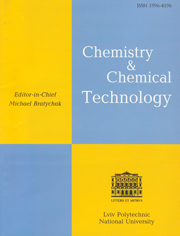Problems of Wastewater Pretreatment from the Edible Oils Production
Affiliation:
University of Bielsko-Biala, Faculty of Materials and Environmental Sciences,
Institute of Environmental Protection and Engineering
2, Willowa str., 43-309 Bielsko-Biala, Poland
L.Przywara@ath.bielsko.pl
DOI:
https://doi.org/10.23939/chcht04.02.147
| Attachment | Size |
|---|---|
| 189.1 KB |
Keywords:
Abstract:
The pretreatment of the wastewater from the edible production based on calcium phosphates precipitation, generates sludge characterized by good sedimenting properties. However, a part of the sludge floats through the surface of the settling tank. Lime added for phosphorus removal simultaneously removes also sulphates to a level of above 2000 mg/l. The liquid associated with floated sludge contains low sulfates concentration – about 370 mg/l. The aim of the research project was to examine the causes of such a low sulphates concentration.
References:
[1] Ruffer H. and Rosenwinnkel K.: Oczyszczanie Sciekow Przemyslowych. Oficyna Wydawnicza Projprzem - EKO, Bydgoszcz 1998.
[2] Lopez- Montilla J., Pandey S., Shah D. and Crisalle O.: Water Research, 2005, 39, 1907.
https://doi.org/10.1016/j.watres.2005.02.018
[3] Moralez-Munoz S., Luque-Garcia J. and Luque de Castro M.: Chemospfere, 2004, 56, 943.
https://doi.org/10.1016/j.chemosphere.2004.05.011
[4] Eaton A., Clesceri L. and Greenberg A.: Standard Methods for the Examination of Water and Wastewater, American Public Health Association, Washington 1995.










